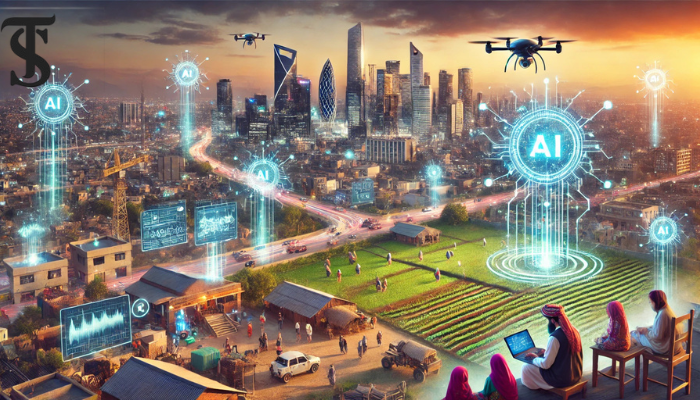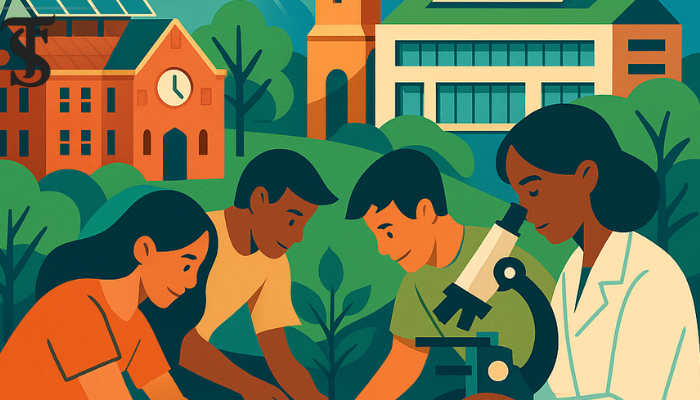Artificial Intelligence in Neuroscience: Advancing Brain Research and Diagnosis
- AI in Neuroscience – Artificial intelligence enhances brain research by improving diagnostics, detecting neurological disorders, and analyzing complex neural networks.
- Neurological Disorder Detection – AI-driven algorithms assist in identifying and diagnosing conditions like Parkinson’s, Alzheimer’s, and epilepsy through advanced imaging techniques.
- Medical and Cognitive Advancements – AI aids in understanding brain functions, neurotransmitter activity, and mental health disorders, leading to improved treatments and healthcare innovations.
Numerous discoveries in the life sciences, especially in the realm of neuroscience, have been accelerated by innovative technologies like artificial intelligence (AI), deep learning, machine learning, and optogenetics. Given AI’s intrinsic advancements, it is not surprising that “neuroscience,” a sophisticated study of the nervous system, may profit from AI’s limitless potential to magnify the human intellect. There is a limit to how much information our minds can handle, despite the fact that they are capable of remarkable feats.
By identifying neurological issues and detecting neurotransmitters, among other uses, we could be able to improve neuroscience and uncover the mysteries of the human brain alongside the development of AI systems. Thus, the productive interaction between AI and neuroscience and its applications to advancing our understanding of this discipline are covered in this study.
ARTIFICAL INTELLIGENCE:
The imitation of human intellect in robots that are designed to resemble people is known as artificial intelligence (AI). Through the use of algorithms, pattern recognition, and improved data, artificial intelligence (AI) can replicate a sophisticated part of the human brain that would allow robots to mimic people, carry out tasks, and complete tasks by watching, copying, and developing. Machine learning and deep learning are two subgroups of artificial intelligence that each offer specific applications. One component of artificial intelligence that might help create AI-driven applications is machine learning.
A variety of outcomes may be predicted through learning thanks to machine learning’s approach to large amounts of both organized and unstructured data. Multiple algorithms and techniques are employed to absorb the data, producing processed data that may be utilized for a variety of applications. Reinforcement learning, supervised learning, and unsupervised learning are all included in machine learning. Algorithms for unsupervised learning use unlabeled data to autonomously find patterns in the data sets.
The systems are able to perform tasks in an uncertain environment by recognizing the hidden characteristics in the provided input data. Conversely, supervised learning uses previously labeled data, which enables us to identify the target variable and use historical data to predict future results. The model must be given input and output variables in order to be trained. The other subset of artificial intelligence, deep learning, manages algorithms that are inspired by the structure and operation of the human brain. Large volumes of both organized and unstructured data are used in conjunction with deep learning techniques, which enable machines to use artificial neural networks to make predictions.
NEUROSCIENCE:
Diseases affecting the central and peripheral nervous systems are referred to as neurological disorders. More than 600 illnesses, including Parkinson’s disease (PD), brain tumors, dementia, Alzheimer’s disease (AD), epilepsy, and stroke, are associated with the central nervous system. Imaging methods like magnetic resonance imaging (MRI), which aid in understanding how the brain functions and the illnesses that affect it, are typically used to identify certain neuro disorders. Several machine learning and deep learning approaches were applied to the MRI scans in order to better diagnose the illnesses’ conditions. The researchers created a number of algorithms to diagnose key neurological conditions, such as epilepsy, dementia, AD, PD, and brain tumors.
Depending on the level of intelligence, different types of AI differ. Artificial General Intelligence (AGI), Artificial Narrow Intelligence (ANI), and Artificial Super Intelligence (ASI) are the three main categories into which AI is typically divided. ANI is frequently described as narrow or feeble. The most prevalent kind of AI is this one. With the ability to carry out that particular duty with the least amount of mistake, ANI is made to address a single, unique problem. They are, by definition, made for limited. AI has countless uses, and new advancements may be used in a wide range of fields and businesses. Drug development, medication dosage, and patient testing of various therapies for surgical procedures in the operating room are a few of these uses. AI’s capacity to evaluate complex massive data and provide results without human input is among its most advantageous uses, and it has been shown to improve a number of healthcare.
ADVANTAGE OF AI AND NEUROLOGY:
There is a reciprocal advantage between AI and neurology, two multidisciplinary sciences that are extremely useful in the realm of medical diagnostics. The AI system aids in identifying biological systems’ cognitive capacities, including object identification and decision-making. AI in neuroscience, in particular, demonstrates the significant benefits of comprehending alterations in brain networks and the data utilized for treatment plans. AI also assists in monitoring human functioning.
AI has advanced the diagnosis and treatment of mental disease in the medical area. Because the human brain is a complicated system and it can be challenging to pinpoint the precise causes of neurological illnesses including schizophrenia, Parkinson’s disease, Alzheimer’s disease, and depression, neurology presents many obstacles for medical researchers. It is still difficult to diagnose psychiatric illnesses since symptoms differ from person to person. AI-based algorithms assist with a number of problem-solving
Known as the body’s chemical messengers, neurotransmitters carry messages from nerve cells to target cells, such as muscles, glands, and other neurons. Every neurotransmitter binds to a different receptor; for instance, dopamine binds to dopamine receptors and activates target cells. Neurotransmitters are necessary for the brain to control a number of bodily processes, including breathing, eating, digestion, sleep cycles, and heart rate.
CONCLUSION:
Because neuroscience is made up of generally complicated systems that work together to create emergent behaviors, it presents a number of difficulties. Conventional sensing methods and technologies were employed to track neuronal activity; however, there are still gaps to address the present problems. A sophisticated study of the nervous system might profit from the countless possibilities that artificial intelligence (AI) offers through its ability to magnify the human brain.
The author is currently doing bachelor’s in computer science from COMSATS Islamabad







